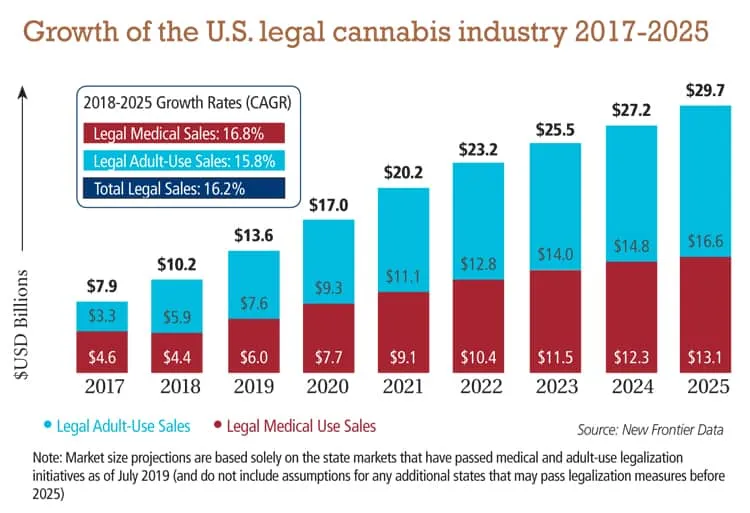Cannabis industry projected to grow long into future
Cannabis: The Next Frontier

The legal, regulated U.S. cannabis market sold $10 billion of products in 2018, will end 2019 at about $13.6 billion in sales and expects to grow at a 14 percent annually compounded rate for the next six years.
And those estimates don’t take into account the addition of other states (18 are currently debating it) to the legal cannabis marketplace, nor does it account for potential changes in federal regulation that could happen after the 2020 national elections.
Estimates of industry growth have been compiled in a massive research study completed by New Frontier Data,…
THIS ARTICLE IS FOR SUBSCRIBERS ONLY
Continue reading for less than $3 per week!
Get a month of award-winning local business news, trends and insights
Access award-winning content today!




